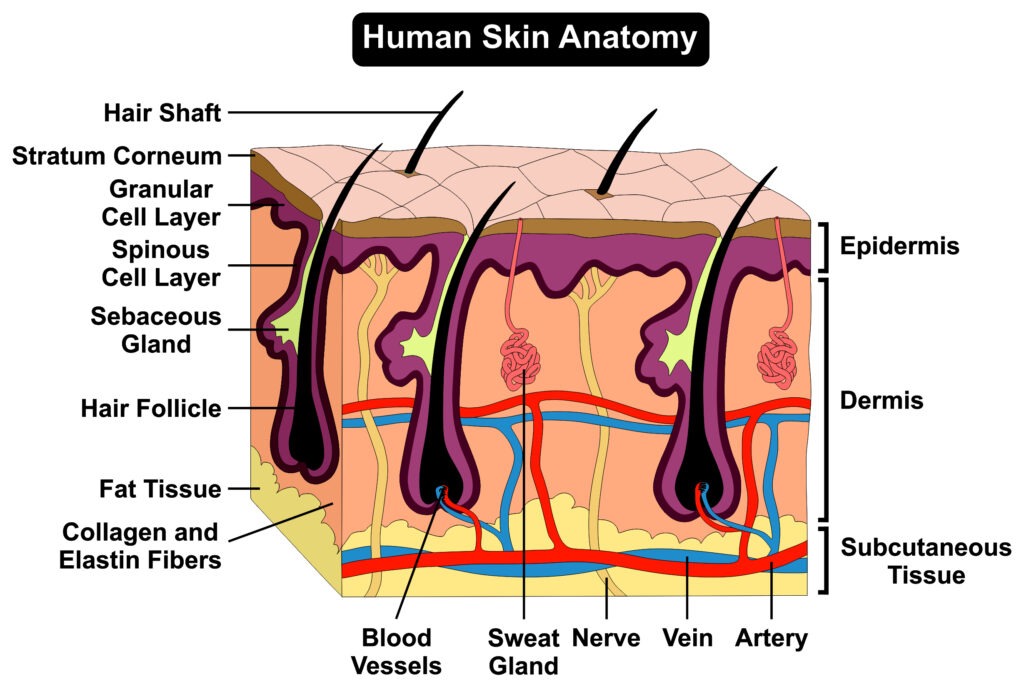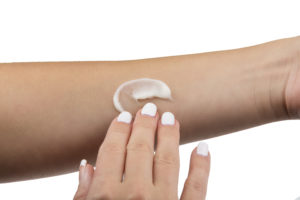The skin and all of its structures are known as the integumentary system. The skin is the largest organ of the body. The skin consists of three tissue layers, which are the epidermis, the dermis and subcutaneous fat. There are more than a million sensory receptors distributed throughout human skin. These sensory receptors allow us to experience pain, heat, cold, touch, and pressure.
As the skin is our other protective covering, it is susceptible to minor irritations – abrasions, sun burns, insect bites – that can cause pain or itchy sensations. Topical anesthetics can be used to temporarily relieve pain and discomfort.



